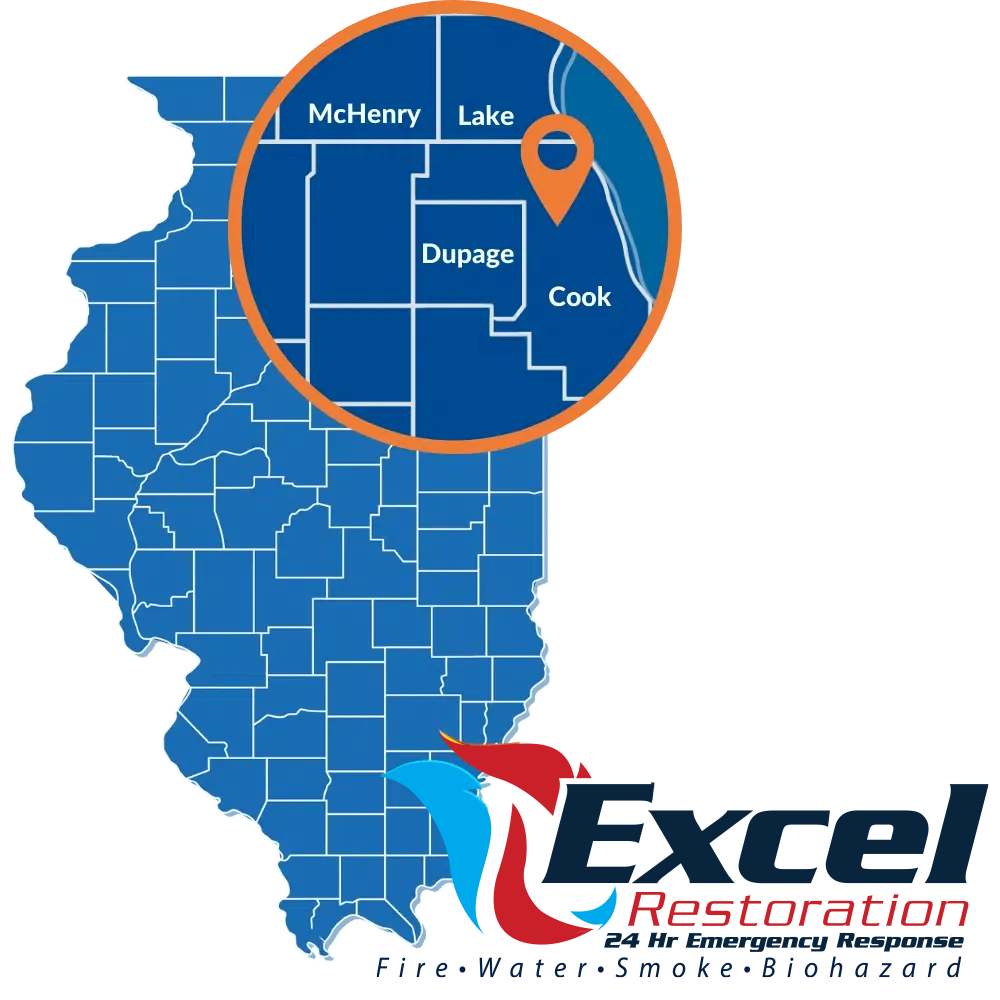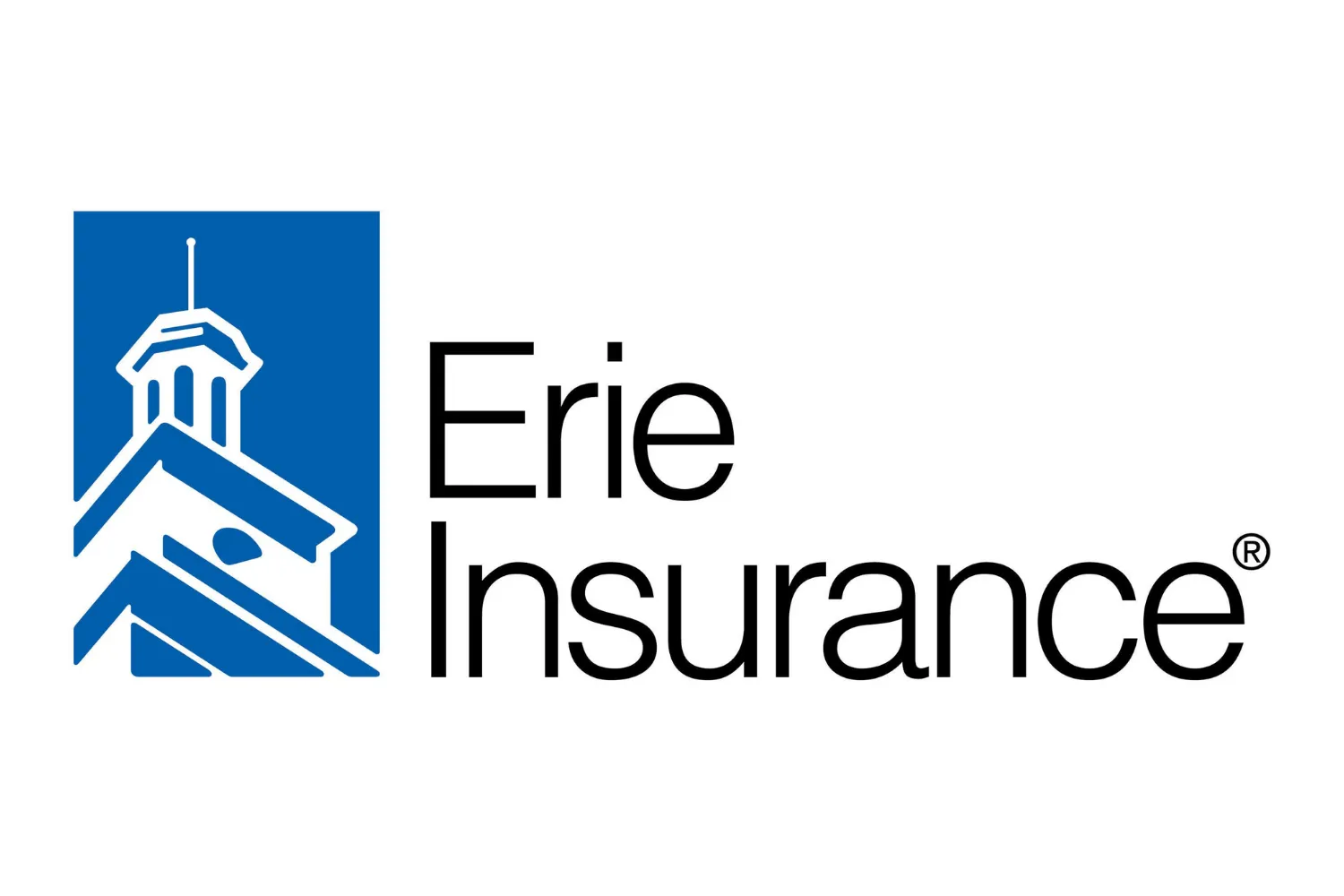Water damage can be devastating, leaving behind a trail of destruction in its wake. From ruined items to compromised structures, the aftermath of water damage can be overwhelming. In this section, we will explore the impact of water damage and discuss the items that are most likely to be affected. We will also provide tips on how to identify water damage, helping you take the necessary steps towards recovery.
In the face of water damage, it is essential to act swiftly to minimize further harm. By understanding the potential consequences and knowing what to look for, you can effectively assess the extent of the damage and make informed decisions about restoration and repair.
Key Takeaways:
- Water damage can ruin a wide range of items, from furniture to electronics and personal belongings.
- Identifying water damage early on can help mitigate further damage and ensure an efficient recovery process.
- Consulting professionals for assessment, restoration, and repair work is crucial to ensure a safe and effective recovery.
- Prompt action is essential to prevent mold growth and maintain the structural integrity of the affected areas.
- By understanding the impact of water damage and taking timely measures, you can minimize the extent of the damage and protect your property.
Assessing Furnishings Affected by Water Damage
Water damage can have devastating effects on furnishings, causing irreversible damage and compromising their integrity. It is crucial to assess the extent of damage to determine the restoration options and salvageable items. By taking prompt action and following proper assessment procedures, you can minimize the impact and potential loss of your cherished belongings.
Assessment Process
To effectively evaluate the water damage on your furnishings, follow these steps:
- Begin by wearing protective gear such as gloves and a mask to ensure your safety.
- Start by examining upholstered furniture, such as sofas and chairs. Look for visible signs of water damage, including discoloration, water stains, or a musty odor.
- Check wooden furniture for warping, mold growth, or swelling. Pay close attention to any changes in texture or color.
- Inspect metal furnishings for rust or corrosion caused by prolonged exposure to water.
- Assess electronic items present in your furnishings, such as televisions or stereo systems, to determine if they have been water damaged.
By conducting a thorough assessment, you can identify the items that are salvageable and prioritize their restoration. Consult with professional restoration services to receive expert advice on the best course of action for your water damaged furnishings.
Restoration Options
Depending on the extent of the damage, there are various restoration options available for water damaged furnishings:
- Professional cleaning: In some cases, professional cleaning services can effectively remove stains, odors, and mold from your furnishings.
- Reupholstering and refinishing: If the fabric or wood on your furnishings is severely damaged, consider reupholstering or refinishing them to restore their original appearance.
- Repairs: Minor damages such as loose joints or hardware can often be repaired by skilled craftsmen, extending the lifespan of your cherished pieces.
Remember, each situation is unique, and the restoration options may vary. It is recommended to consult with professionals who specialize in water damage restoration to make informed decisions regarding your furnishings.
| Furnishing Type | Assessment Criteria | Restoration Options |
|---|---|---|
| Upholstered Furniture | Discoloration, water stains, musty odor | Professional cleaning, reupholstering |
| Wooden Furniture | Warping, mold growth, swelling | Refinishing, repairs |
| Metal Furnishings | Rust, corrosion | Cleaning, refinishing |
| Electronic Items | Water damage, malfunction | Professional inspection, repairs |
The Impact of Water Damage on Electronics and Appliances
When it comes to water damage, electronics and appliances are particularly vulnerable. The presence of water can wreak havoc on these devices, rendering them unusable and potentially dangerous. Understanding the effects of water damage on electronics and appliances is crucial for effectively assessing their conditions and taking appropriate action.
Water-damaged electronics, such as smartphones, laptops, and televisions, can suffer from a range of issues. The moisture can cause short circuits, corrosion of internal components, and irreversible damage to electrical connections. In some cases, these devices may not even power on or function properly after being exposed to water. It is important to note that attempting to power on or charge water-damaged electronics can further exacerbate the damage and increase the risk of electrical hazards.
Appliances that have been submerged or exposed to water can also experience significant damage. Water can infiltrate the internal electrical systems and compromise their functionality. Motors, circuit boards, and heating elements are particularly susceptible to corrosion and malfunctioning. As a result, these appliances may no longer work as intended or pose a safety risk if operated without proper inspection and repair.
Considering the potential hazards associated with water-damaged electronics and appliances, it is crucial to prioritize electrical safety. Here are some steps to follow when dealing with water-damaged devices:
- Disconnect: Immediately disconnect all electronic devices and appliances from power sources to prevent electrical shock hazards.
- Dry: Thoroughly dry the devices using absorbent materials or by utilizing air circulation methods. Avoid applying direct heat, as it can cause further damage.
- Assess: Assess the extent of the damage by looking for signs of corrosion, unusual odors, or abnormal behavior when attempting to power on the device.
- Consult a Professional: It is recommended to seek professional assistance from certified technicians who specialize in water damage restoration for electronics and appliances.
By entrusting the evaluation and repair processes to professionals, you can ensure the safety and reliability of your electronics and appliances. These experts have the necessary tools, knowledge, and experience to accurately assess the damage and perform needed repairs while adhering to electrical safety standards.
The Importance of Electrical Safety
Electrical safety is paramount when dealing with water-damaged devices. Water and electricity are a dangerous combination, and mishandling such situations can have severe consequences, including electrical shocks, fires, or even fatal accidents. Here are some electrical safety tips to keep in mind:
- Avoid: Do not touch water-damaged devices while standing on wet surfaces or with wet hands.
- Do Not Plug: Refrain from plugging in or operating water-damaged devices until they have been thoroughly inspected and repaired by a professional.
- Power Off: In the event of a water-related incident, switch off the main power supply to ensure electrical safety throughout the premises and prevent further damage.
- Water and Electric Wires: Never touch electric wires or cords that have been in contact with water without proper protection, even if the power supply is turned off.
Remember that when it comes to electrical safety, it is always better to err on the side of caution. Seeking professional help and following safety guidelines can help prevent accidents and minimize the risk of further damage to both your property and yourself.
| Types of Water-Damaged Electronics | Effects of Water Damage |
|---|---|
| Smartphones and Tablets | Short circuits, corrosion, malfunctioning touchscreens, loss of functionality |
| Laptops and Computers | Corroded internal components, data loss, keyboard malfunction, system failure |
| Televisions and Audio Equipment | Electrical shorts, distorted sound, blurry images, failure to power on |
| Kitchen Appliances (microwaves, refrigerators, etc.) | Corroded circuits, malfunctioning controls, motor failure, electrical hazards |
Understanding the Structural Damage Caused by Water
Water damage can have severe implications for the structural integrity of a building. When water infiltrates the walls and foundation, it can lead to various types of structural damage that require immediate attention and remediation. Understanding these potential issues is crucial for ensuring the safety and stability of your property.
One of the common forms of structural damage caused by water is the saturation of walls. Waterlogged walls can weaken the structural components, compromise their load-bearing capacity, and create the perfect environment for mold and mildew growth. Over time, this can result in rotting, warping, and deterioration, further compromising the stability of the building.
In addition to waterlogged walls, another significant concern is a compromised foundation. Water seepage through foundation cracks or excessive moisture buildup can lead to the weakening and shifting of the foundation. This can cause structural misalignments, cracks in the walls, uneven floors, and other serious structural issues. Ignoring foundation damage can have severe consequences, potentially jeopardizing the safety of occupants and requiring costly repairs.
To better understand the different types of structural damage caused by water, refer to the table below:
| Types of Structural Damage | Description |
|---|---|
| Waterlogged Walls | Excessive water saturation in walls, leading to weakening, rotting, and mold growth. |
| Compromised Foundation | Damage to the foundation due to excessive water, resulting in shifting, cracks, and instability. |
| Structural Misalignments | Displacement or movement of structural components, leading to cracks, leaning walls, or sagging ceilings. |
| Weakened Load-Bearing Capacity | Loss of strength and stability in load-bearing walls or supports, potentially causing structural collapse. |
As you can see, addressing water-related structural damage is crucial to maintain the safety and integrity of your property. If you notice signs of water damage, such as dampness, discoloration, cracks, or bulging walls, it’s essential to take immediate action. Consult a professional water damage restoration specialist to assess the extent of the damage, identify underlying issues, and recommend appropriate remediation measures.
By promptly addressing structural damage caused by water, you can prevent further deterioration, protect your investment, and ensure the long-term stability and safety of your property.
The Impact of Water on Flooring and Carpets
Water damage can have a devastating effect on flooring and carpets. When water seeps into these materials, it can cause irreversible damage, leading to ruined surfaces and potential mold growth. In this section, we will delve into the impact of water on different types of flooring materials and discuss effective restoration techniques. We will also provide insights on dealing with waterlogged carpets to minimize further damage.
The Effects of Water on Various Flooring Materials
When exposed to water, different types of flooring materials react differently. Here are some common materials and the effects water damage can have on them:
- Hardwood floors: Water can cause hardwood floors to warp and buckle. It can also lead to discoloration and promote the growth of mold or mildew.
- Laminate floors: Laminate flooring is particularly vulnerable to water damage as it consists of multiple layers. Moisture can penetrate these layers, causing them to separate and resulting in swelling or warping.
- Carpeted floors: Carpets tend to absorb water quickly, making them prone to water damage. Excess moisture can lead to mold and bacterial growth, causing stains, odors, and an unsanitary environment.
- Tile floors: While water can’t damage the tiles themselves, it can seep through the grout and under the tiles, leading to subfloor damage, loosening of tiles, and potential mold growth.
Restoration Techniques for Water Damaged Flooring
Swift and appropriate action is crucial to minimize damage and preserve the integrity of your flooring. Here are some restoration techniques to consider:
- Remove standing water: Use a wet/dry vacuum or mop to remove any standing water from the affected area. This will prevent further absorption and reduce the risk of additional damage.
- Dry the area: Use fans, dehumidifiers, and open windows to facilitate drying. It’s important to ensure proper air circulation and ventilation to prevent mold growth.
- Consult a professional: For extensive water damage, it’s recommended to seek the services of a professional restoration company. They have specialized equipment and expertise to address the damage effectively.
- Replace damaged materials: In cases of severe damage, it may be necessary to replace the flooring materials entirely. Consult with professionals to determine the best course of action.
Dealing with Waterlogged Carpets
Carpets that have been saturated with water require immediate attention to prevent further damage and mold growth. Here are some steps to consider:
- Extract excess water: Use a wet/dry vacuum or extraction machine to remove as much water as possible from the carpet fibers.
- Dry the carpet: Set up fans and dehumidifiers to speed up the drying process. Do not walk on the carpet until it is completely dry to avoid further damage.
- Clean and disinfect: Thoroughly clean and disinfect the carpet to eliminate bacteria and prevent odors. Use a mild detergent or a carpet cleaning solution recommended for water damage.
- Consider professional cleaning: For extensive water damage, professional carpet cleaning services can help restore the carpets to their pre-damage condition.
Dealing with water damaged flooring and carpets can be a challenging task. However, prompt action and the use of appropriate restoration techniques can help minimize the extent of the damage and restore your space to its previous condition. Keep in mind that in severe cases, it’s best to consult professionals who specialize in water damage restoration to ensure a thorough and safe recovery process.
Dealing with Water Damage in Personal Belongings
When water damage strikes, it can affect more than just the structure of your home. Personal belongings, such as clothing, photographs, and sentimental items, are often susceptible to water soaking. To salvage these cherished items and prevent mold growth, it’s crucial to take immediate action and follow a few essential steps.
- Remove the water-soaked items from the affected area as soon as possible.
- Place the items on a clean, dry surface or hang them up to air dry.
- If the items are delicate or valuable, consider engaging the services of a professional restoration specialist.
- For clothing, gently wash them, following the care instructions. If the clothing is heavily soiled or stained, seek professional cleaning assistance.
- Photographs and sentimental items require special attention. Handle them with care and avoid touching the surface whenever possible. Blot excess moisture gently and allow them to air dry naturally. If needed, consult a professional conservator.
Mold Prevention:
- Ensure that the salvaged items are thoroughly dried before storing them.
- Keep the affected area well-ventilated and use fans or dehumidifiers to reduce moisture levels.
- Inspect the items regularly for any signs of mold growth. If you notice mold, take immediate action to address the issue.
- Maintain proper humidity levels in your home to discourage mold growth.
- If mold appears on any belongings, consult a mold remediation specialist who can guide you on safe and effective removal methods.
By salvaging your water-soaked personal items and taking necessary measures to prevent mold, you can protect your cherished belongings and minimize the impact of water damage.
Assessing Water Damage in Walls and Ceilings
Water damage can have a significant impact on the structural integrity of walls and ceilings. It can weaken the materials, compromise stability, and lead to potential hazards if left unaddressed. In this section, we will guide you on how to assess water damage in these areas, identify any underlying issues, and explore the available options for repairing and restoring damaged walls and ceilings.
Assessment and Identification
When assessing water damage in walls and ceilings, there are several signs to look out for. One common indicator is water stains, which appear as discolored patches on the surface. These stains can range in color from yellowish-brown to dark brown, depending on the severity of the damage. Additionally, you may notice peeling paint, bubbling wallpaper, or a musty odor, suggesting the presence of moisture within the walls or ceilings.
It’s essential to identify the source of the water intrusion before proceeding with repairs. Leaking pipes, roof leaks, or faulty plumbing can all contribute to water damage. By addressing the root cause, you can prevent future issues and ensure long-term solutions.
Evaluating Structural Integrity
Once you’ve identified water damage, the next step is to assess the structural integrity of the affected walls and ceilings. Waterlogged materials can weaken the structural components, compromising their stability. Look for signs of sagging, warping, or cracks in the walls or ceiling surfaces. These are indications that the damage has affected the underlying structure.
If you suspect significant structural damage, it’s crucial to consult a professional contractor or structural engineer. They can conduct a thorough evaluation and provide expert advice on the necessary repairs or reinforcements needed to restore the integrity of the affected areas.
Repairing and Restoring Options
When it comes to repairing water-damaged walls and ceilings, the appropriate course of action depends on the extent of the damage. In some cases, minor repairs may be sufficient, while extensive damage may require more extensive restoration work.
Here are common repairing options to consider:
- Replacing damaged drywall or plaster: Severely damaged areas may require removing and replacing the affected sections of drywall or plaster.
- Applying sealants and waterproofing: Applying sealants or waterproofing coatings can help prevent future water intrusion.
- Repairing or replacing insulation: Water-damaged insulation should be properly evaluated and either repaired or replaced.
- Addressing mold and mildew: If mold or mildew is present, it’s crucial to address the issue before repairing the walls or ceilings. Consult a professional for effective mold remediation.
| Severity of Water Damage | Recommended Actions |
|---|---|
| Minor water stains and surface discoloration | – Clean the surface – Apply stain-blocking primer – Repaint the affected area |
| Moderate water damage, including peeling paint and visible warping | – Remove damaged sections of drywall or plaster – Repair underlying structural issues – Replace damaged insulation – Repaint or reapply finishing |
| Severe water damage, extensive structural concerns, and mold/mildew growth | – Consult a professional contractor or structural engineer for a detailed assessment – Implement necessary repairs or reinforcements – Address mold remediation thoroughly – Complete restoration work |
Remember, it’s essential to prioritize safety and consult professionals for complex or extensive water damage situations. They have the expertise to provide accurate assessments and ensure the appropriate repairs are carried out, protecting the structural integrity of your walls and ceilings.
Conclusion
Water damage can wreak havoc on your home, causing significant harm to various items and even compromising the structural integrity of the building. From furnishings to electronics, flooring to personal belongings, no aspect is safe from the destructive effects of water.
To minimize the extent of damage and mitigate risks, it is crucial to understand the impact of water damage and take prompt action. Assessing the extent of damage and consulting professionals for assessment, restoration, and repair work is essential to ensure a safe and efficient recovery process.
Remember, time is of the essence when dealing with water damage. Acting quickly can help salvage valuable items, prevent mold growth, and minimize the financial and emotional toll of the aftermath. By being proactive and seeking professional help, you can restore your home and belongings to their pre-damaged condition.
FAQ
What items are most likely to get ruined after water damage?
After water damage, several items are at risk of being ruined, including electronics, furniture, carpets, documents, photographs, clothing, and sentimental belongings.
How can I identify water damage in my home?
There are several signs of water damage to look out for, such as water stains on walls or ceilings, musty odors, warped or discolored flooring, peeling paint or wallpaper, and visible mold growth.
How can I assess the extent of damage to water-damaged furnishings?
To assess the damage to water-damaged furnishings, you can look for signs of warping, discoloration, mold growth, and structural instability. It’s best to consult with a professional restoration service to determine the salvageability of the items.
What are the restoration options for water-damaged furnishings?
The restoration options for water-damaged furnishings depend on the extent of damage and the material. Professional restoration services may utilize techniques such as drying, cleaning, deodorizing, and refinishing to salvage damaged furnishings.
How can I salvage items affected by water damage?
Salvaging items affected by water damage involves prompt action, such as removing them from the water source, drying them carefully, and cleaning them if necessary. It’s essential to consult professionals for specialized restoration techniques for delicate or valuable items.
What should I do with water-damaged electronics and appliances?
It’s crucial to avoid using water-damaged electronics and appliances and refrain from attempting DIY repairs. Instead, unplug them and contact a professional to assess the damage and determine if they can be restored or need replacement.
What are the safety concerns related to water-damaged electronics?
Water-damaged electronics can pose risks of electrical shock or fire hazards. To ensure safety, do not touch wet electronics while plugged in or attempt to power them on. Leave the assessment and restoration work to trained professionals.
What types of structural damage can occur due to water damage?
Water damage can cause various structural issues, including waterlogged walls, weakened foundations, rotted wood, and compromised structural integrity. It’s crucial to address these issues promptly to prevent further damage and ensure the safety of the building.
How can I assess water damage in walls and ceilings?
To assess water damage in walls and ceilings, look for signs such as water stains, bulging or sagging areas, peeling paint or wallpaper, and visible mold growth. Consult professionals to evaluate the severity of the damage and determine the appropriate repair options.
How can I deal with water damage in personal belongings?
To deal with water damage in personal belongings, remove the items from the water source, gently dry them, and separate any wet items to prevent mold growth. Consult professionals for specialized restoration services and techniques to salvage valuable or sentimental items.

















